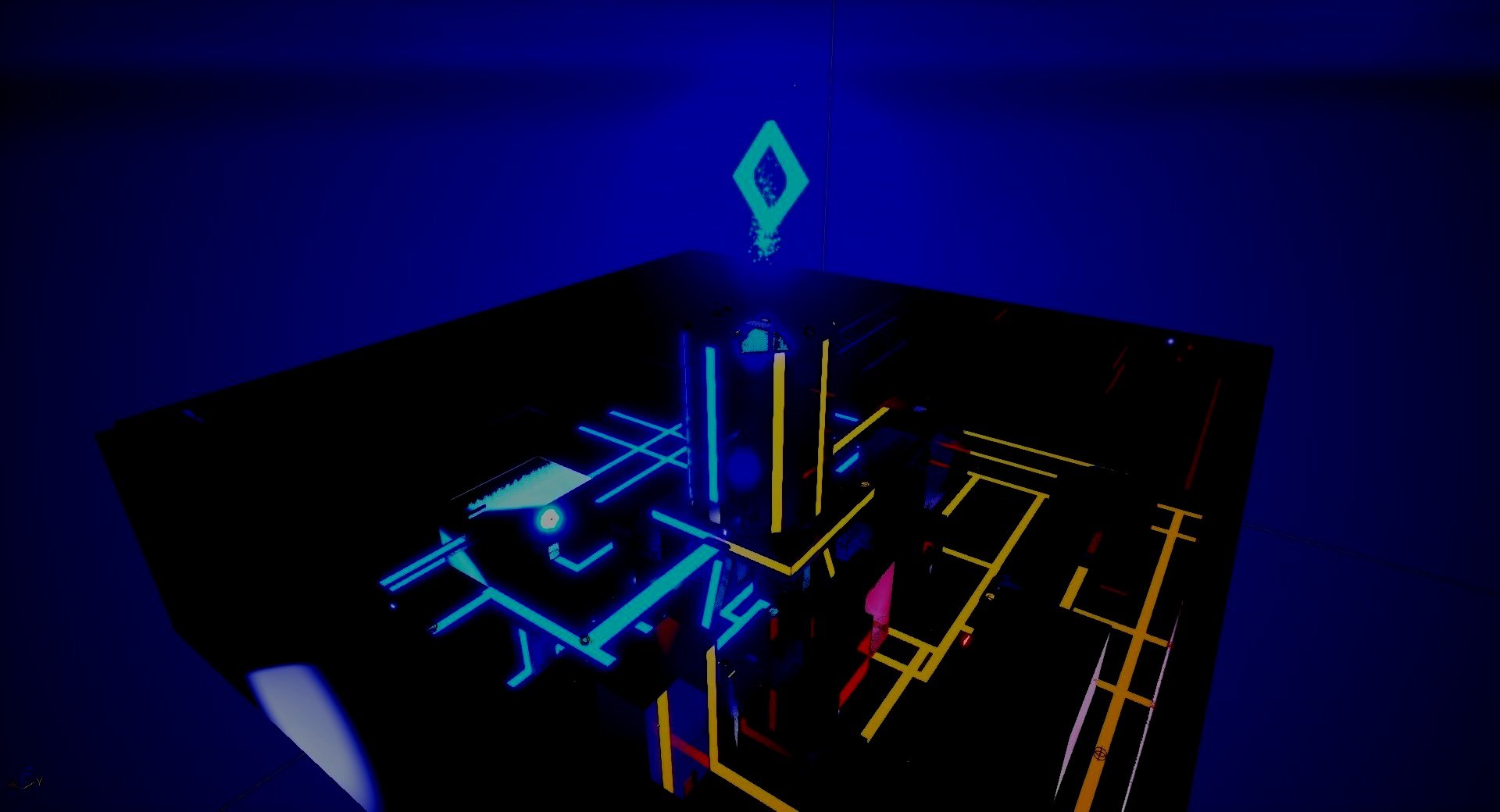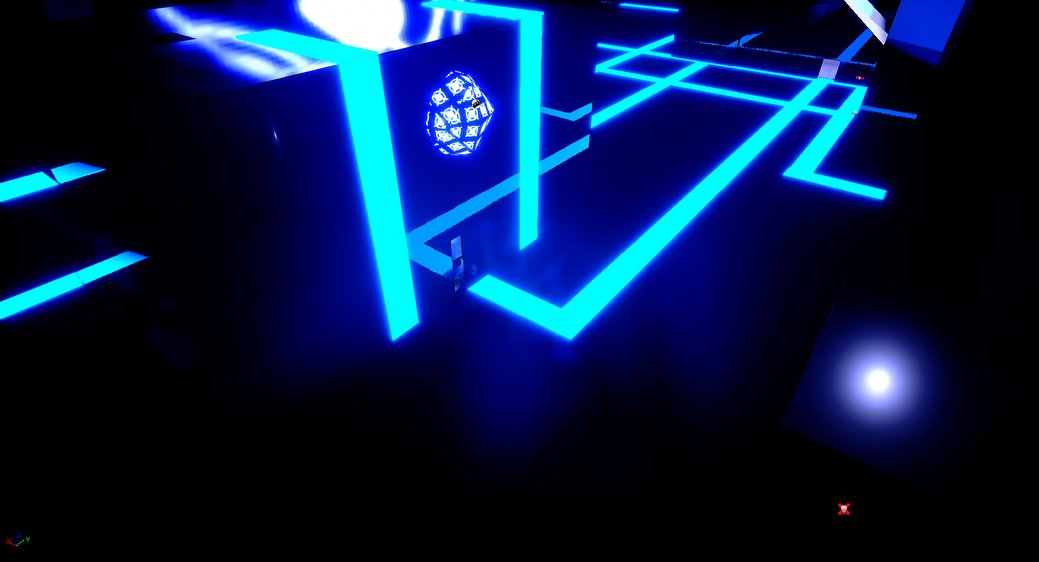
This was the first level I ever designed, inspired by the TRON franchise!
Overview
Cynet City was the first level I ever fully designed during my time at LaSalle College. It was my first foray into learning building levels and constructing games in Unreal Tournament and the Unreal Engine as a whole, with the time I to design the whole map only being a few weeks.
Unfortunately, with the discontinued support of Unreal Tournament by Epic Games and the passage of time, I’m unable to revisit this level in a playable state, but I’ll go over what I learned and my key work highlights to the best of my ability.
As a Level Designer, my primary focuses were:
Designing A Capture The Flag Style Map made for third-person multiplayer shooter style gameplay.
Creating Multiple Objective Paths using various types of encounter spaces for players to take to the objective for different types of combat encounters between players.
Designing Key Points of Interest - having vantage points with weapon upgrades with spaces for players to fight over to potentially gain the advantage for their team.
Implementing world assets to create the environment and atmosphere.
Keep in mind this was my First Ever Level Design Project, so everything was pretty basic and not indicitave of how I would design a level like this today!

Key Level Beats
Level Design
The goal of this map was to apply a little bit of all of the base fundamentals of level design and applying them together to build variety in the combat encounters and in how to reach the objectives.
For reference I rewatched TRON LEGACY and took notes on the Grid setting and while creating an entire city was out of the question, I gleaned a few key things about that setting and applied them to my level:
Having a central tower as a landmark with particle effects as signiifiers to highlight the location of a sniper rifle upgrade to attract players attention.
Playing with elevation in level flow - the ground level having a lot of tight alleys and buildings to go into for more tight combat, while higher level buildings and platforms are built for more open spacing and further sightlines.
Using the different colours of each team as waypoints by utilizing emissive materials for each team to navigate on where to go and outline their respective territiories.
Fluidity in moving from one space to the next - Unreal Tournament had assets like moving platforms and jump pads so for including those it was importanr that they were in places that felt natural in getting to a point of interest or for quick traversal without favoring one team over the other.
Key Combat Encounters
As I stated above, I used elevation to dictate the types of combat encounters players would experience.
The ground level had a lot of smaller buildings placed together, especially closer to the center of the map, creating narrow corridors for tight combat, with entry in points for cover and having the same kind of close combat without the worry of someone attacking from a higher platform.
Some buildings also had multiple floors to be accessed via stairs and elevation platforms to be able to travserse walkways. This was meant to be a risk vs. reward type scenario, where you gained an advantage of having the high ground and further sightlines over players on the ground, but ran the risk of being more open and being seen attempting to get the the enemy objective.
Unreal Environment Design
This was also the project that made me discover how much fun I had creating things in Unreal’s editor, and creating the art assets needed for the atmosphere I was going for.
The key things I learned here were:
Building materials for each players base and their side of the map.
Building particle effects.
Creating atmosphere using the post-processing volume and emissive lighting.
Incorporating music and sound effects.




